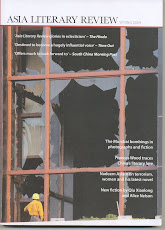
Had a drink with a foreign trader with China who passes through Shanghai occasionally. He decided to sound of after a few hard weeks and was bemoaning the slow down in the US and projecting that his business (sourcing a wide variety of products for US retailers) could be halved by year end. His other problem was that he always had difficulty back home in America explaining that business in Canton (Guangzhou if you will and where he does most of his sourcing) invariably involved various ‘off the books’ fees that were unavoidable. His customers back in law- and accountant-fearing America didn’t like these payments.
But thus was it ever I recently reread Paul van Dyke’s excellent The Canton Trade: Life and Enterprise on the China Coast, 1700-1845 (out in paperback now from Hong Kong University Press). In the 1720s, at the start of the Sino-European China trade, port fees at Canton were assessed by the authorities based on the length and width of the arriving ships – eminently sensible at the time. To this was added a rather more variable fee that changed from season to season known as the ‘Emperor’s Present’ – a separate and fixed amount levied on each ship. The ‘Emperor’s Present’ had no connection to the maths of port fees at Canton and did not fluctuate with inflation – it lasted 140 years…and according to some traders of my acquaintance still does.








No comments:
Post a Comment